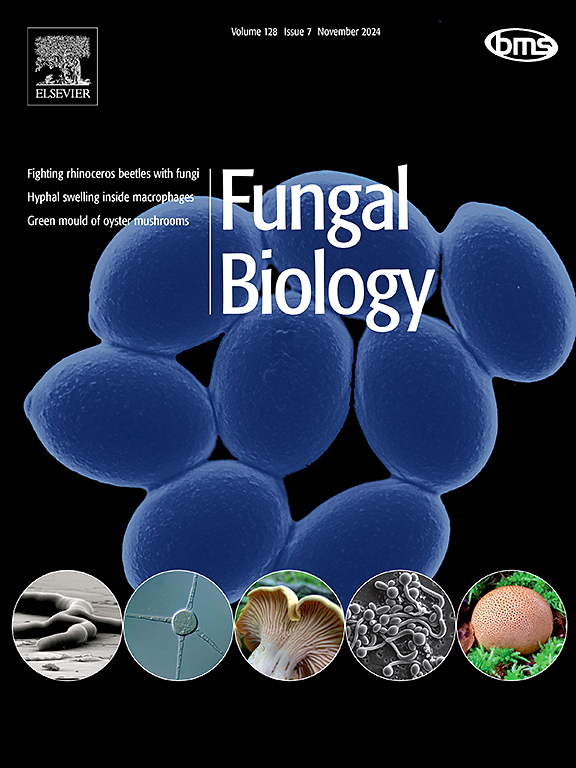Epidemiology and genetic characterization of Alternaria alternata causing leaf spot in Fragaria × ananassa
IF 2.9
3区 生物学
Q2 MYCOLOGY
引用次数: 0
Abstract
Alternaria leaf spot (ALS), caused by Alternaria alternata, is a major disease threatening strawberry (Fragaria × ananassa) production globally, including in Pakistan. This study investigated the incidence and prevalence of ALS in key strawberry-producing regions of Pakistan and characterized the pathogen using morphological and molecular techniques. Surveys were conducted during the 2014–2015 and 2015–2016 seasons across 182 farms in Punjab, Khyber Pakhtunkhwa, and Islamabad. Disease prevalence was 100% across all regions, with incidence rates ranging from 17.25% in cooler Islamabad to 55% in Mardan, KPK. Pathogenicity tests confirmed A. alternata as the causal agent. Morphological traits and sequencing of the ITS and endoPG genes further validated its identity. Phylogenetic analysis showed close genetic relatedness to known A. alternata isolates. This is the first comprehensive report of ALS in strawberries in Pakistan, confirming A. alternata as the primary pathogen. The widespread occurrence and high incidence highlight the urgent need for effective control measures. Integrated disease management, including resistant cultivars and targeted fungicide use, is strongly recommended. Further research should investigate environmental factors influencing disease spread and severity to support long-term sustainable management of ALS in strawberry cultivation.
黄花菜叶斑病的流行病学及遗传特征
由互花孢霉(Alternaria alternata)引起的互花孢霉叶斑病(ALS)是威胁全球草莓(Fragaria × ananassa)生产的主要病害,包括巴基斯坦。本研究调查了巴基斯坦主要草莓产区ALS的发病率和流行情况,并利用形态学和分子技术对病原菌进行了鉴定。调查于2014-2015年和2015-2016年在旁遮普省、开伯尔-普赫图赫瓦省和伊斯兰堡的182个农场进行。所有地区的患病率均为100%,发病率从较冷的伊斯兰堡的17.25%到KPK的马尔丹的55%不等。致病性试验证实交替曲霉为致病因子。ITS和endoPG基因的形态特征和测序进一步验证了其身份。系统发育分析表明,该菌株与已知的互花拟南芥分离株遗传亲缘关系密切。这是巴基斯坦草莓ALS的首次综合报道,证实了交替蚜为主要病原菌。广泛性、高发性,迫切需要采取有效的控制措施。强烈建议进行综合病害管理,包括培育抗病品种和有针对性地使用杀菌剂。进一步的研究应探讨影响病害传播和严重程度的环境因素,以支持草莓栽培中ALS的长期可持续管理。
本文章由计算机程序翻译,如有差异,请以英文原文为准。
求助全文
约1分钟内获得全文
求助全文
来源期刊

Fungal biology
MYCOLOGY-
CiteScore
5.80
自引率
4.00%
发文量
80
审稿时长
49 days
期刊介绍:
Fungal Biology publishes original contributions in all fields of basic and applied research involving fungi and fungus-like organisms (including oomycetes and slime moulds). Areas of investigation include biodeterioration, biotechnology, cell and developmental biology, ecology, evolution, genetics, geomycology, medical mycology, mutualistic interactions (including lichens and mycorrhizas), physiology, plant pathology, secondary metabolites, and taxonomy and systematics. Submissions on experimental methods are also welcomed. Priority is given to contributions likely to be of interest to a wide international audience.
 求助内容:
求助内容: 应助结果提醒方式:
应助结果提醒方式:


